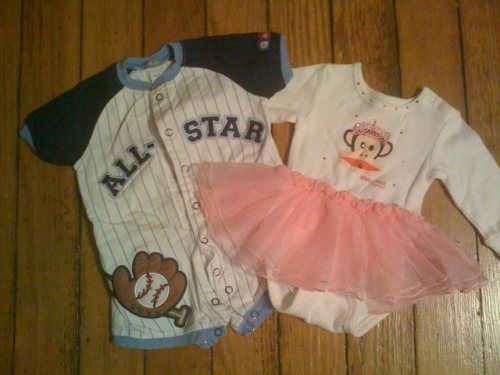 This post is crossposted at She Writes.
This post is crossposted at She Writes.
This month I was a nominee in Babble’s Moms with Clout contest. In the end, Sausage Mama won, not me. But the whole enchilada got me thinking: What is “clout”? And why do so many women have trouble owning theirs?
My dictionary defines clout as “power and influence.” Synonyms include “pull,” “authority,” “sway,” and “weight.” In the public sphere, traditionally, clout has been gendered male. To an overwhelming degree, it still is. (See the depressing stats here.) Women, however, are mixing it up. At social networks like She Writes, where authors promote one another and not just ourselves, at game-changing initiatives like The OpEd Project, where established thought leaders help fellow female experts embrace their expertise and get heard, “clout” is being redefined as something more communally achieved. But even in the push for collaborative clout, and particularly among women, the tension between the one and the many remains.
I know this tension personally. I experienced it this past month as I emailed my friends to ask for their vote, then opted against posting the request at She Writes or at my group blog,Girl w/Pen. It just didn’t seem Girl w/Pen-y (or She Writes-y) to promote myself just for the sake of winning an iPad 2 (the prize). I meticulously checked to see if any other of the 30+ nominees were She Writes members, so that I could shout us out collectively, as my colleagues in leadership at She Writes and I agreed that that would be the right way to do it. But since they weren’t, I let it go.
In the end, I mildly regretted not saying something about it in the forums available to me—forums, heck, I’ve helped create. I admit: I wanted that iPad! I would have put it to good use, downloading e-books and apps and learning about the new forms all our books might take as I work toward my new project (The Pink and Blue Diaries). But as early as day 2 or 3 of the contest, I quickly learned that I didn’t want it that bad. Just as I couldn’t bring myself to harass my non-She Writes friends and followers more than once (ok, twice), I felt that promoting myself here for commercial gain would compromise the spirit of the community. It felt like a conflict of interest, you know?
And that, exactly, is the problem. Not just my problem, but women’s more generally I fear. Are women collaborative, at times, to a fault? In putting the community above ourselves, are we losing out on opportunities to enhance not merely our pocketbooks but our careers? After all, winning a contest like this one is not just about winning an iPad. To say you’ve won a contest breeds…clout.
And why should we care about clout? Love it or hate it, fact is if you want to be a successful writer these days, clout matters. It’s no longer the merit of our work but the reach of our platform that gets us the goodies. Clout has been a social media buzzword for “influencer” or “community leader” for a while, but interestingly, now it’s also a website, complete with metrics and scores. Klout.com measures “overall online influence” through an algorithm that determines exactly how much influence someone has over their social networks. In a Klout score, numbers mean nothing; “true” influence means more. (Come on, you know you want to, so go for it: check your Klout score here.) Will publishers start looking up our clout scores, like they look up our previous book’s sales in Book Scan? Who knows.
In the meantime, I am not alone in my hesitation. But nor do I necessarily think that’s a good thing. In an article for a Canadian parenting site, top blogger Ann Douglas explores the dark–or rather, the ambivalent side–of making the top “mommyblogger” lists, while Catherine Connors of Her Bad Mother notes in a post at her own blog that top blogger and clout lists can be a source of bad feeling in the mom community, leaving those not listed feeling badly. “I think, to that extent, they’re a little problematic,” Connors says, then adds: “I think it’s interesting that we worry about…whether feelings get hurt and the community spirit gets undermined—when this kind of discussion would be pretty much unthinkable in almost any other sphere. Does anyone talk about Forbes business rankings making men feel bad?”
Um, no.
And that brings me back to my main concern: I was flattered to be nominated in Babble’s “Moms with Clout” contest. In the end, I couldn’t do what it takes. I find it interesting—and problematic—that I am so comfortable writing this post after the contest is over, revealing my ambivalence, but wasn’t comfortable asking for your vote. Either I am being too ladylike, or simply not woman enough.
Attention GWPenners in the NYC Area: Join me, She Writes, and The OpEd Project for a joint Happy Hour in Manhattan on Sat. April 16! And for a break from all that clout-making and clout-sharing, come recharge at the mini-retreat I’m leading for writing mamas with Christina Baker Kline on May 21 in Brooklyn.


 When my dear friend and beloved colleague Gloria Feldt invited me to write a guest post for the
When my dear friend and beloved colleague Gloria Feldt invited me to write a guest post for the Ask me five years ago and I’d have told you I’d be first in line to challenge gender stereotypes if ever I had kids myself. I minored in feminist cultural studies! I believe boys and girls are made, not just born! But sixteen months into parenting my boy/girl twins, I’m starting to wonder how I’ll ever ensure that my boy grows up sensitive and my girl stays, as
Ask me five years ago and I’d have told you I’d be first in line to challenge gender stereotypes if ever I had kids myself. I minored in feminist cultural studies! I believe boys and girls are made, not just born! But sixteen months into parenting my boy/girl twins, I’m starting to wonder how I’ll ever ensure that my boy grows up sensitive and my girl stays, as  This past week you might have noticed something different around here.
This past week you might have noticed something different around here. This is the fifth and final in a series this week from Girlw/Pen writers on Stephanie Coontz‘s new book,
This is the fifth and final in a series this week from Girlw/Pen writers on Stephanie Coontz‘s new book,  Wishing all of you happy holidays — the very, very best!
Wishing all of you happy holidays — the very, very best! Just posted:
Just posted: 